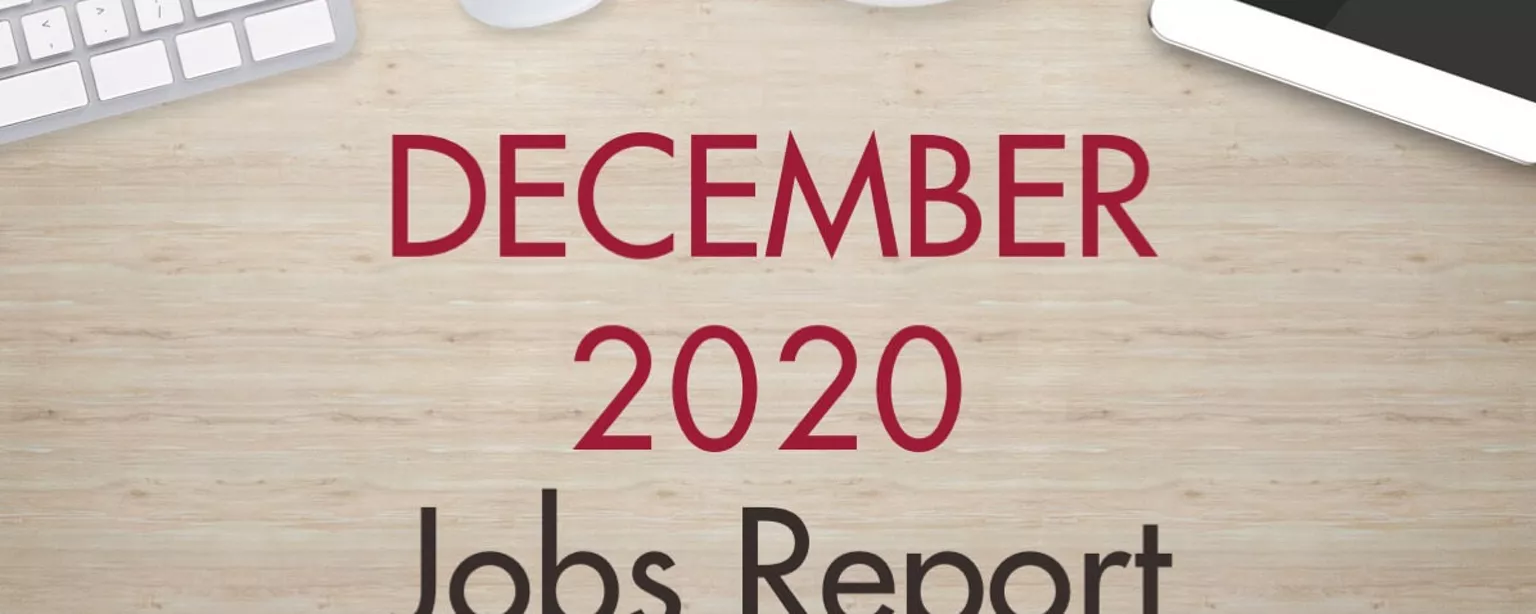Employment declined in December as employers continued to grapple with the impact of the COVID-19 pandemic on their businesses. All told, 140,000 jobs were cut last month, ending seven consecutive months of job growth.
Job losses were heaviest in the leisure and hospitality sector, where companies reduced payrolls by 498,000 jobs. Many of these employers had to temporarily close their establishments or reduce service offerings as part of efforts to help contain the pandemic.
Nonetheless, there were bright spots in December. Offsetting the losses were notable gains in the professional and business services industry, where employers added 161,000 jobs.
Payrolls also expanded in the following sectors in December:
- Retail trade: 120,500 jobs added
- Construction: 51,000 jobs added
- Transportation and warehousing: 46,600 jobs added
- Manufacturing: 38,000 jobs added
- Wholesale trade: 25,100 jobs added
- Financial activities: 12,000 jobs added
- Mining and logging: 4,000 jobs added
Unemployment rate holds at 6.7%
The national unemployment rate in December was 6.7%, unchanged from November.
The rate for college-degreed workers was 3.8%, down from 4.2% in both November and October. These professionals are the most highly sought-after job candidates.
What employers need to know
You might expect your team members to start the new year with a sense of energy and excitement. But after a tumultuous 2020, your staff may still be feeling worn out, even with a holiday break. Research by our company suggests many workers are feeling overloaded and under pressure.
A survey we conducted found that nearly half (45%) of employees working remotely were regularly putting in more than eight hours per day. And nearly seven in 10 professionals (68%) working from home were regularly devoting time on the weekends to work.
So check in with your team members, especially those working remotely, to gauge how they’re feeling now, before things start to get really busy. And to help your staff maintain a healthy work-life balance this year, consider strategies such as:
- Promoting “windowed work” — letting employees break up their day into distinct chunks of business and personal time.
- Improving health and wellness offerings (which can also boost your hiring efforts).
- Bringing in temporary professionals to keep critical work moving forward.
Get more ideas for supporting your employees’ mental health and well-being.
What job seekers need to know
The start of the year is typically an excellent time to look for a new job. Many companies have fresh hiring budget to spend and new initiatives to staff.
Of course, given the ongoing pandemic and related business uncertainty, it might take longer than you’d like to land a job. It’s easy to get discouraged. But it’s important to be persistent in your job search efforts so you don’t miss a great opportunity. Employers are hiring. In fact, there were more than 6.7 million job openings as of October 2020, according to the most recent report from the BLS.
Here are some strategies for keeping up the momentum and staying motivated:
- Maintain a schedule. Set aside a specific amount of time every day to devote to research, applying to jobs and networking online with professional contacts.
- Work with a specialized staffing firm, like Robert Half. Our recruiters often know about available jobs before they’ve even been advertised, and they’ll help advocate for you with employers.
- Invest in your well-being. Take time to engage in activities, like exercise, that can help keep you feeling energized and positive as you look for work.
Get tips on how to find remote jobs now.
DECEMBER 2020 U.S. BUREAU OF LABOR STATISTICS MONTHLY JOBS SUMMARY
140,000 JOBS LOST*
6.7% UNEMPLOYMENT RATE*
3.8% UNEMPLOYMENT RATE UNEMPLOYMENT RATE FOR COLLEGE GRADS*/**
UNEMPLOYMENT RATE OVER THE PAST 12 MONTHS*
| Unemployment Rate | Unemployment Rate for College Grads | ||
|---|---|---|---|
| January '20 | 3.5% | 2.0% | |
| February '20 | 3.5% | 1.9% | |
| March '20 | 4.4% | 2.5% | |
| April '20 | 14.8% | 8.4% | |
| May '20 | 13.3% | 7.4% | |
| June '20 | 11.1% | 6.9% | |
| July '20 | 10.2% | 6.7% | |
| August '20 | 8.4% | 5.3% | |
| September '20 | 7.8% | 4.7% | |
| October '20 | 6.9% | 4.2% | |
| November '20 | 6.7% | 4.2% | |
| December '20 | 6.7% | 3.8% |
*Source: Bureau of Labor Statistics
**College-degreed workers 25 and older
See what these results mean for job seekers and employers at roberthalf.com/blog.
WORKING WEEKENDS A REALITY FOR MANY
68% of workers who transitioned to a remote setup as a result of the pandemic said they work on the weekend.
Source: Robert Half survey of more than 2,800 workers in the U.S.
© 2021 Robert Half. An Equal Opportunity Employer M/F/Disability/Veterans.
roberthalf.com







